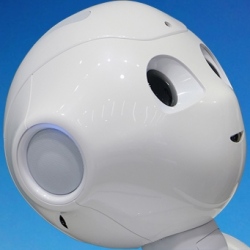
Movies have warned of AIs taking our lives while ignoring a more plausible near-future threat: that they will take our jobs. A growing number of economists and researchers are recommending that societies prepare for a world where large numbers of jobs are automated.
If they’re right, the disruption to labour markets would be significant: the jobs identified as vulnerable are held by swathes of the population including supermarket cashiers and shop assistants, waiters, truck drivers and office admins. All of these tasks have a high probability of being carried out by software within "a decade or two", according to a study by the Oxford Martin School & Faculty of Philosophy in the UK.
Not everyone agrees, but these predictions have struck a chord with those of some of the best-known names in AI research. Andrew Ng, is the chief scientist for Chinese search giant Baidu and specialises in the field of deep learning, previously having worked on the "Google Brain" project. Recently, Baidu demonstrated a deep learning system that is able to describe what’s in images and get it right almost 95 percent of the time.
"I do think there’s a significant risk of technological unemployment over the next few decades," said Ng. "Many people are doing routine, repetitive jobs. Unfortunately, technology is especially good at automating routine, repetitive work."
Jobs may already be being destroyed at a faster rate than they are being created. MIT (Massachusetts Institute of Technology) economists Erik Brynjolfsson and Andrew McAfee drew attention to how technology might have broken the centuries old link between employment and productivity in their recent book The Second Machine Age.
In general, the abilities of AI tend to be narrow: they can recognise what’s in an image or learn how to screw a top on a bottle, but, unlike people, can’t switch from these specific tasks to do something entirely unrelated, such as make a sandwich.
Without a human’s ability to react to the multitude of unexpected circumstances the real world can throw up, software and robots still have many challenges to overcome if they are to take on jobs outside of tightly-controlled environments, such as factory production lines.
Google’s self-driving cars may have travelled more than one million miles, for example, but they still struggle with scenarios that human drivers could take in their stride.
"It’s pretty clear that AI at the moment, using driverless cars as an example, isn’t at a level where it can entirely be trusted to take over," said Sean Holden, senior lecturer in Machine Learning in the Computer Laboratory at Cambridge University.
"No matter what you read by PR departments with deep pockets, an AI cannot at the moment, if someone is standing at the side of a road waving their arms about, work out whether it’s someone saying hello to their friend, and therefore nothing to do with them, or someone gesticulating at it to stop."
There is also still a gulf between the abilities of robots and humans when it comes to certain complex physical tasks that we take for granted. These shortcomings were very apparent at this year’s Darpa Robotics Challenge where many bots failed to stay upright. Robots also struggle with manual tasks that we find simple, such as picking items from warehouse shelves.
Other machine intelligence researchers are more bullish about the prospects for AI-driven automation, contending that software will rapidly become more accomplished as it takes on new tasks.
"It all boils down to machine learning. Most of the automation will be driven by software that learns from its own experience," said Hod Lipson, professor of Mechanical Engineering, Columbia University in NYC.
"As it learns, it gets better. Not just that specific instance of the software gets better, but all instances learn from each other’s experiences. This compounding effect means that there is tremendous leverage."
